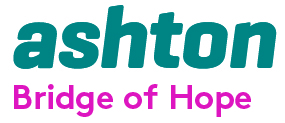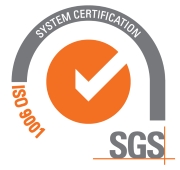Date: 29/11/2012
Northern Ireland Health and Social Care Inequalities Monitoring System Sub-regional Inequalities HSC Trusts 2012 The Department of Health, Social Services and Public Safety published the 2012 sub-regional report of the Health and Social Care Inequalities Monitoring System (HSCIMS) on 29 November 2012.
The report provides a picture of health inequalities at HSC Trust level and a detailed comparison of morbidity, mortality, utilisation and access to health and social services between the 20% most deprived areas within a Trust and the overall Trust as well as NI as a whole. All HSCIMS reports are published on the Departmental website at: http://www.dhsspsni.gov.uk/index/stats_research/stats-equality.htm
Key Points
• Health outcomes were generally worse in the 20% most deprived areas within a Trust when compared with the Trust as a whole. Belfast HSC Trust
• The largest inequality gaps between health outcomes experienced in the Belfast Trust and its most deprived areas occurred in alcohol-related admissions (120%) and self-harm admissions (113%).
• Other relatively large inequality gaps exist across many areas, with twenty of the thirty-four indicators examined in the Belfast Trust showing gaps of 40% magnitude or greater.
• More encouragingly, gaps were relatively small for infant mortality, cancer incidence, dental registrations, day case admissions and elective admissions.
• Life expectancy for people living in the most deprived areas within the Belfast Trust was 6.7 and 3.9 years lower than in the overall Trust for males and females respectively.
• A number of noticeable improvements were recorded in the inequality gaps over time within the Belfast Trust, in particular, for infant mortality and cancer incidence.
• Conversely, some gaps widened over time, most notably for day case admissions, low birth weights, median fire response times, respiratory mortality, amenable death rates and suicide. Northern HSC Trust • The largest inequality gaps in the Northern Trust occurred in alcohol related hospital admissions
(100%), alcohol related mortality (94%) and self harm admissions (91%).
• Of the thirty-four indicators examined in the Trust, nine had inequality gaps greater than 40%, with five of these considered to be very large i.e. (>60%).
• The life expectancy Trust inequality gaps for males and females were 3.7 and 1.7 years respectively.
• There have been many instances where inequality gaps in the Northern Trust reduced, most noticeably for smoking during pregnancy, all cancer and lung cancer (both incidence and mortality) and mortality due to smoking related causes.
• However widening of inequality gaps also occurred, in particular for suicide, elective admissions, day case admissions, alcohol related admissions and male life expectancy. There was also an increase in the inequality gaps related to median response times for emergency services, with the median ambulance response time gap almost doubling. South Eastern HSC Trust
• The largest inequality gaps in the South Eastern Trust occurred in alcohol related admissions (106%), teenage births (103%), self-harm admissions (90%), alcohol related mortality (88%) and suicide (74%).
• Ten of the thirty-four health outcomes examined in the South Eastern Trust had large inequality gaps (i.e. >40%) while almost a third of health inequality gaps (11) were considered small (<20%).
• Life expectancy in the most deprived areas within the Trust was 2.4 years and 1.0 years lower for males and females respectively.
• Reductions in inequality gaps were observed in alcohol related mortality, hospital admissions due to circulatory disease, emergency and elective hospital admissions, breastfeeding and smoking during pregnancy.
• A number of health inequality gaps, despite improvements in health outcomes, widened over the observed time period. This was true for mortality indicators due to amenable causes, respiratory disease, circulatory disease and cancer. Other gaps similarly increased but this was due to a greater deterioration in health outcomes in deprived areas than in the wider Trust, including teenage births, suicide, day case admissions and mortality due to lung cancer. Southern HSC Trust
• Alcohol related admissions, alcohol related mortality and self harm admissions in the most deprived areas were all approximately twice that in the overall Trust itself.
• Overall, nine of the thirty-four indicators examined in the Southern Trust had relatively large inequality gaps of 40% or more, whereas more than a third (12) of inequality gaps were less than 20%.
• The gaps in life expectancy for males and females were 2.3 years and 2.1 years respectively.
• Infant mortality, cancer incidence and respiratory mortality all experienced reductions in inequality gaps over time as improvements in health outcomes occurred greatest in the most deprived Southern Trust areas while the suicide gap halved over time due to a slower increase in deprived areas than in the wider Trust.
• There was a widening of gaps for death rates due to circulatory disease, amenable causes and both ambulance and fire response times. Western HSC Trust
• The largest inequality gaps occurred in alcohol related admissions, alcohol-related deaths and self-harm admissions, all of which in the most deprived areas were more than double that in the Trust as a whole.
• Of the thirty-four health outcomes examined in the Western Trust, eleven had large inequality gaps (>40%). Almost two-fifths of the indicators had inequality gaps less than 20%.
• Males living in the most deprived areas might expect to live 4.4 years on average less than their counterparts in the overall Trust while females might expect to live 2.7 years less.
• Inequality gaps improved for circulatory admissions, day case admissions, all inpatient and emergency acute admissions, all cancer and lung cancer incidence and smoking during pregnancy.
• A number of health inequality gaps widened over the observed time period such as mortality due to amenable causes, respiratory disease, circulatory disease, suicide and alcohol related mortality.
Notes to editors:
1. The Health and Social Care Inequalities Monitoring System (HSCIMS) comprises a basket of indicators which are monitored over time to assess area differences in mortality, morbidity, utilisation of and access to health and social care services in Northern Ireland. This is the first update of the sub-regional report published by the HSCIMS. The information in this report is the latest available.
2. Inequalities between the 20% most deprived areas within a Trust area (defined using the NISRA Northern Ireland Multiple Deprivation Measure) and the overall Trust are measured.
3. While most of the indicators included in the fourth update bulletin are included, some indicators have been excluded such as drug related deaths (the number of deaths is too small to support a reliable analysis at the sub-regional level), respiratory and circulatory hospital admissions under 75 (just included for all ages) and waiting times (this indicator is currently not included as similar trends were found within each Trust as it is dependent upon trends in the region as a whole).
4. The results presented in the report are based on data from the General Register Office, Hospital Inpatient System, Child Health System, Northern Ireland Cancer Registry, Business Services Organisation, Northern Ireland Fire and Rescue Service and the Northern Ireland Ambulance Service. All HSCIMS reports are available on the Departmental website at: http://www.dhsspsni.gov.uk/index/stats_research/stats-equality.htm
5. Additional Information Further information on Health and Social Care inequalities Monitoring System is available from: Health Inequalities Section Project Support Analysis Branch Department of Health, Social Services and Public Safety Annexe 2, Castle Buildings Stormont, BT4 3SQ Tel: ![]() 028 90 522591 Fax: 028 90 523288 Email: healthinequalities@dhsspsni.gov.uk Web: http://www.dhsspsni.gov.uk/index/stats_research/stats-equality.htm
028 90 522591 Fax: 028 90 523288 Email: healthinequalities@dhsspsni.gov.uk Web: http://www.dhsspsni.gov.uk/index/stats_research/stats-equality.htm






